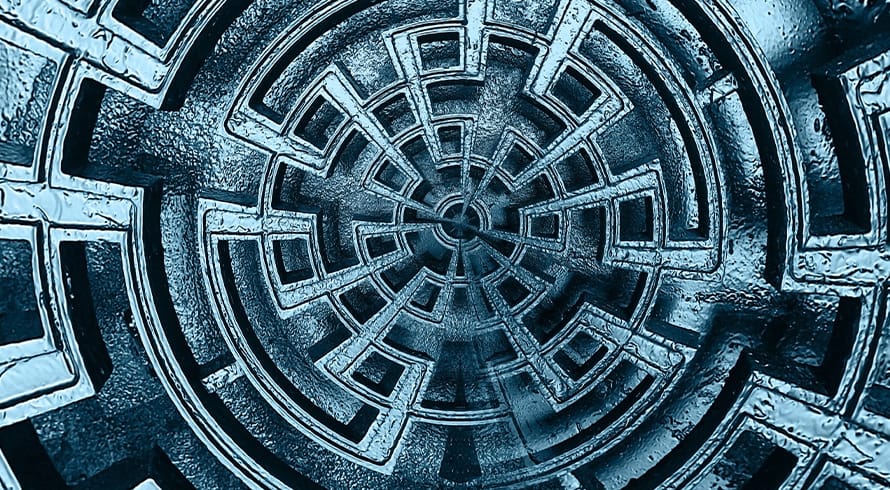AI, deepfakes and the burden of proof for digital evidence in litigation
At a glance
- Deepfakes are transforming litigation, as AI-generated images, audio, and video can now convincingly fabricate events, making it far more difficult to trust digital evidence in court.
- Traditional methods for verifying recordings are no longer enough. Litigants can expect to face heavier burdens to prove what is real, while even genuine evidence can be challenged as fake.
- South African law must adapt. With no clear rules for synthetic media, courts and practitioners must act early, rely on expert input, and push for reforms to safeguard the integrity of digital evidence.
The courtroom was an inevitable target. In September 2025, the Superior Court of California, County of Alameda was forced to impose terminating sanctions in Mendones, et al v Cushman & Wakefield, Inc., et al (Case No. 23CV028772) after finding that a video submitted as evidence by the plaintiffs was fabricated using artificial intelligence (AI), and then submitted as an authentic recording.
Although South African courts have not yet confronted a comparable case, the technology is widely accessible and our current evidentiary framework was drafted decades ago. Deepfakes were certainly not considered by policymakers.
What are deepfakes?
Deepfakes are AI-generated synthetic media, like images, audio and video, that create realistic but false representations of people doing or saying things they never did.
In the past, the most convincing deepfakes used autoencoder-based face swaps and then Generative Adversarial Networks (GANs) – a technology where two AI systems compete against each other. One creates fake content while the other tries to detect it, pushing both to improve until the fakes become nearly indistinguishable from reality. Today, technologies used for deepfakes include diffusion models and transformer-based architectures, sometimes producing even more realistic results than GANs alone, though typically with slower generation.
With time, more AI technology became available to the public and deepfake tools are now accessible to anyone with a laptop and free software. This means that a video of a person to be used as evidence, a recording of a party admitting fault, or footage contradicting an alibi can be altered or fabricated – or deepfaked – with relative ease.
How does South African law deal with electronic evidence today?
Section 15 of the Electronic Communications and Transactions Act 25 of 2002 (ECTA) establishes that “data messages” cannot be excluded as evidence merely because they are electronic. Courts must assess reliability by examining how the message was generated, stored and communicated; how its integrity was maintained; how its originator was identified; and any other relevant factors. Under section 15(4), data messages made in the ordinary course of business (if properly certified) are admissible in evidence on production and constitute rebuttable proof of their contents.
Section 3 of the Law of Evidence Amendment Act 45 of 1988 (LEAA) governs hearsay, permitting admission as evidence when the interests of justice require it. Courts consider factors including the nature of the evidence and its probative value, the reason the original source is unavailable, and the potential prejudice to the parties.
Together, these provisions, along with the common law and process statutes, create a flexible, framework that admits digital evidence while demanding judicial scrutiny of reliability. But both statutes predate deepfakes by decades and they were promulgated when the primary concern was whether a fax or an email constituted credible evidence, not whether a video recording depicts reality at all.
How do you authenticate electronic evidence?
Traditional authentication methods include chain of custody documentation, metadata analysis, and witness testimony. Deepfakes undermine all of these.
A forensic analyst can only testify that certain artefacts were found on a device and, if the chain of custody is intact, that they weren’t placed there after the collection was done. They cannot, however, always confirm how artefacts might have been placed on a device and whether the contents or metadata are a true reflection of reality. For example, if a person claims that artefacts were placed on their device by a stranger who loaned them their charging cable at the airport, without a corroborating witness, a forensic analyst’s evidence would not be of assistance.
And this is how the technology creates two authentication failures:
- False positives: A fabricated video may pass traditional scrutiny and be admitted as genuine. If the metadata is intact, the chain of custody documented, and the content facially plausible, courts and litigants may struggle to identify sophisticated fakes due to a lack of tools needed for this purpose.
- False negatives: Authentic evidence risks rejection whenever a party claims deepfake manipulation. This has already surfaced in cases like Sz Huang et al v Tesla, Inc. et. al. (Case No. 19CV346663), where Tesla’s counsel refused to admit video evidence of Elon Musk on grounds it could easily have been deepfaked, especially because Musk is famous, and despite the absence of actual evidence of manipulation.
Technical detection tools do exist, but they are expensive, often require expert testimony and remain vulnerable to the same adversarial techniques that create deepfakes in the first place. In short, there is no failsafe method to confirm the authenticity of videos, images, voice recordings and other electronic media.
How does this impact the burden of proof?
The party relying on electronic evidence bears the responsibility of proving authenticity. In the deepfake era, that burden becomes substantially heavier. Litigants may now need digital forensic experts simply to establish what was once obvious from the face of a recording. This drives up costs and complexity, creating a barrier to justice for smaller litigants and making certain claims uneconomical to pursue.
The reverse problem is equally problematic. Parties facing damaging but authentic evidence can deploy the ‘deepfake defence’ to manufacture doubt where none should exist. Recordings that would have been devastating in the past may now be called into question with a bare allegation of manipulation, forcing the tendering party to prove the authenticity of such recordings or a court to dismiss the evidence. In the Tesla case, the court ordered the deposition of Musk which, of course, would delay the conclusion of proceedings.
Courts face an unenviable task: having enough scepticism to guard against sophisticated fakes, but not so much that every video becomes presumptively suspect. Get it wrong either way and the consequences could be serious.
Why do the existing rules regarding evidence need to be adapted?
South African law’s current technology-neutral stance is no longer sufficient. While the ECTA and LEAA allow flexibility, they do not contain any presumptions relating to evidence that may be synthetic or AI-generated, require early disclosure of whether AI tools were used in the creation of the evidence, or provide standards for expert testimony on digital authenticity.
Comparative jurisdictions are moving ahead. The Federal Rules of Evidence Advisory Committee in the US is actively considering amendments to address the authentication and admissibility of AI-generated content. A new proposed Federal Rule of Evidence 707 (“Machine-Generated Evidence”) was approved by the Judicial Conference in June 2025 and is open for public comment until February 2026. This rule requires that AI-generated evidence must meet the same standards of reliability and admissibility under Rule 702 (which governs expert testimony) when presented without an expert witness. It ensures rigorous scrutiny, requiring demonstration that AI output is based on sufficient facts and reliable methods, and is reliably applied to the case facts.
Another proposal aims to amend Rule 901 on authentication to specifically address deepfake and generative AI evidence. It introduces a burden-shifting framework where a party challenging AI-manipulated evidence must provide sufficient proof that the content may be fabricated or altered by AI, placing the burden on the proponent to disprove authenticity.
How can South Africa reform its existing legal framework?
Drawing on foreign practice and the realities of modern litigation, several reforms are worth considering:
- Mandatory disclosure of AI involvement: Parties should be required to disclose whether evidence has been created or altered using AI technologies. This places the burden of transparency on the party with knowledge of how the material was generated.
- Enhanced authentication standards for audiovisual evidence: Courts should demand more than facial plausibility before admitting video or audio recordings. Metadata analysis, chain of custody documentation, witness corroboration and expert testimony should become standard rather than exceptional requirements.
- Understanding of the limits on digital authentication: Courts should be well advised to consider that there is currently no robust mechanism to authenticate the origin of digital artefacts
- Accredited digital forensic experts: A recognised register of qualified forensic analysts would help courts and litigants distinguish between genuine, reliable experts and opportunistic or under-qualified practitioners. This could be administered through existing professional bodies or the judiciary itself.
- Judicial training and bench guides: Following the US’ example, South African courts could develop practical ‘bench cards’ for judges. These would function as reference guides on identifying deepfake risks, framing the right questions for experts, and weighing reliability factors under section 15 of the ECTA.
- Early resolution of authenticity disputes: Case management rules should require parties to raise authenticity challenges early, with disputes resolved in pre-trial conferences or through case management rather than at trial. This prevents ambush tactics, ensures forensic evidence can be properly prepared and tested, and reduces the impact on courts’ resources.
What challenges does South Africa face?
- Resource constraints: Unlike US courts, South African courts may lack access to forensic expertise and detection tools.
- Volume of litigation: With already strained court rolls, additional evidentiary hearings will increase delays.
- Risk of injustice: Marginalised litigants may be least able to afford expert testimony, raising fairness concerns.
What can we expect until solutions are found?
Until reforms are enacted, litigants and courts face a difficult landscape. We can expect more frequent disputes over digital recordings, from WhatsApp voice notes to CCTV footage. Courts and litigants will be increasingly forced to rely on costly – but potentially still refutable – expert evidence, and even then, they would need to take a considered view that audiovisual and digital artefacts can only add to the weight of circumstantial evidence as opposed to treating these artefacts as indisputable evidence. Most worryingly, there remains the potential for wrongful outcomes where deepfakes are admitted or genuine evidence is discredited.
Conclusion
Deepfakes undermine the foundational assumption that audiovisual evidence depicts reality. South African law provides a relatively flexible baseline through the ECTA and LEAA, but neither statute was designed with synthetic media in mind.
Litigants should anticipate heavier evidentiary burdens when tendering video or audio recordings. Where authenticity is likely to be contested, early engagement with digital forensic experts will be necessary. On the other side, parties facing suspicious evidence should raise authenticity challenges promptly rather than waiting until trial.
Policymakers and the legislature and the judiciary will need to adapt procedural rules and evidentiary standards, learning from jurisdictions already grappling with these issues. Awareness should be raised with the judiciary, which will inevitably have to deal with these evidentiary challenges. For now, practitioners should work on the assumption that any digital recording can be challenged and trust that our courts are able to balance appropriate scepticism against the risk of rendering audiovisual evidence effectively inadmissible.
The information and material published on this website is provided for general purposes only and does not constitute legal advice. We make every effort to ensure that the content is updated regularly and to offer the most current and accurate information. Please consult one of our lawyers on any specific legal problem or matter. We accept no responsibility for any loss or damage, whether direct or consequential, which may arise from reliance on the information contained in these pages. Please refer to our full terms and conditions. Copyright © 2025 Cliffe Dekker Hofmeyr. All rights reserved. For permission to reproduce an article or publication, please contact us cliffedekkerhofmeyr@cdhlegal.com.
Subscribe
We support our clients’ strategic and operational needs by offering innovative, integrated and high quality thought leadership. To stay up to date on the latest legal developments that may potentially impact your business, subscribe to our alerts, seminar and webinar invitations.
Subscribe




